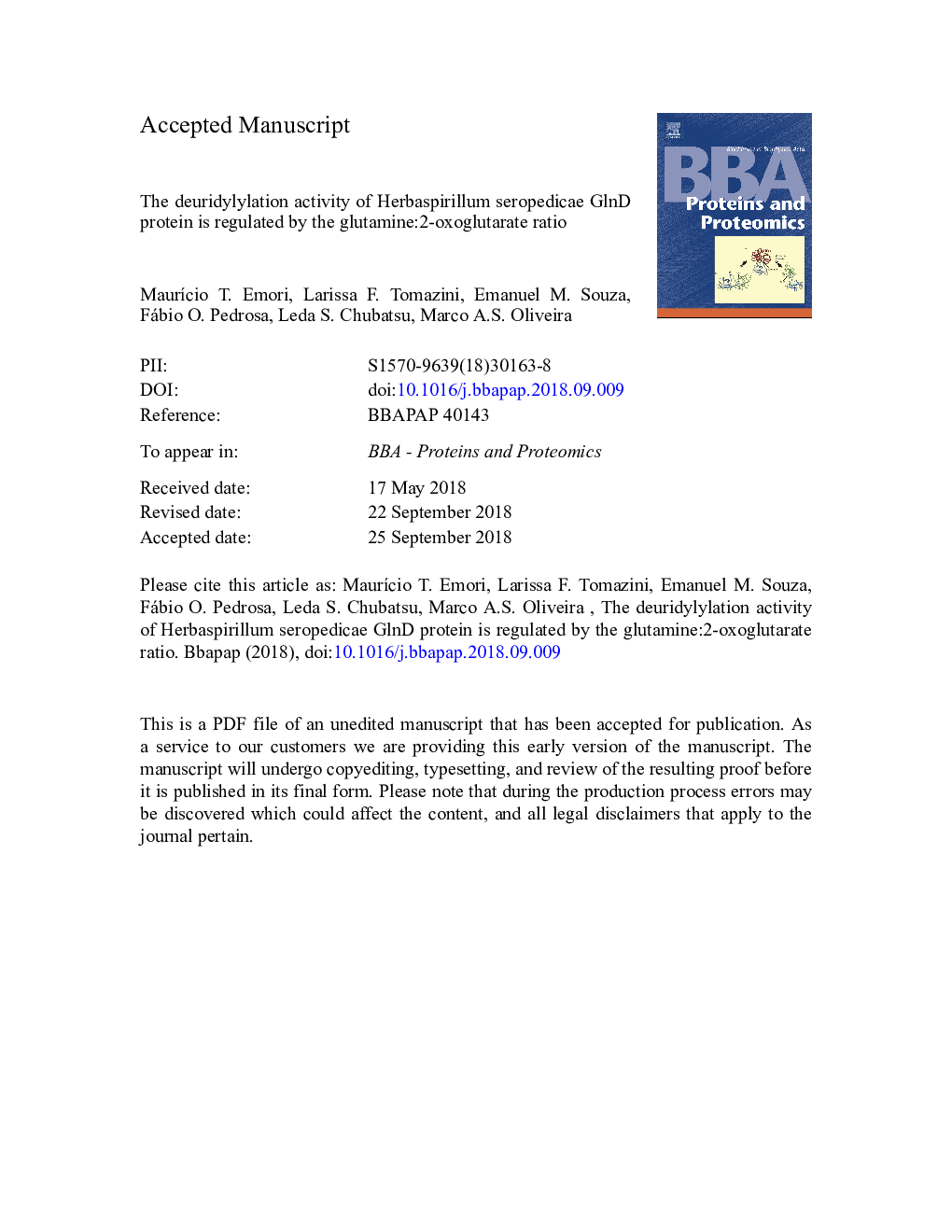| Article ID | Journal | Published Year | Pages | File Type |
|---|---|---|---|---|
| 11011832 | Biochimica et Biophysica Acta (BBA) - Proteins and Proteomics | 2018 | 38 Pages |
Abstract
The nitrogen metabolism of Proteobacteria is controlled by the general Ntr system in response to nitrogen quality and availability. The PII proteins play an important role in this system by modulating the cellular metabolism through physical interaction with protein partners. Herbaspirillum seropedicae, a nitrogen-fixing bacterium, has two PII proteins paralogues, GlnB and GlnK. The interaction of H. seropedicae PII proteins with its targets is regulated by allosteric ligands and by reversible post-translational uridylylation. Both uridylylation and deuridylylation reactions are catalyzed by the same bifunctional enzyme, GlnD. The mechanism of regulation of GlnD activity is still not fully understood. Here, we characterized the regulation of deuridylylation activity of H. seropedicae GlnD in vitro. To this purpose, fully modified PII proteins were submitted to kinetics analysis of its deuridylylation catalyzed by purified GlnD. The deuridylylation activity was strongly stimulated by glutamine and repressed by 2-oxoglutarate and this repression was strong enough to overcome the glutamine stimulus of enzymatic activity. We also constructed and analyzed a truncated version of GlnD, lacking the C-terminal regulatory ACT domains. The GlnDÎACT protein catalyzed the futile cycle of uridylylation and deuridylylation of PII, regardless of glutamine and 2-oxoglutarate levels. The results presented here suggest that GlnD can sense the glutamine:2-oxoglutarate ratio and confirm that the ACT domains of GlnD are the protein sensors of environment clues of nitrogen availability.
Keywords
Related Topics
Physical Sciences and Engineering
Chemistry
Analytical Chemistry
Authors
MaurÃcio T. Emori, Larissa F. Tomazini, Emanuel M. Souza, Fábio O. Pedrosa, Leda S. Chubatsu, Marco A.S. Oliveira,
